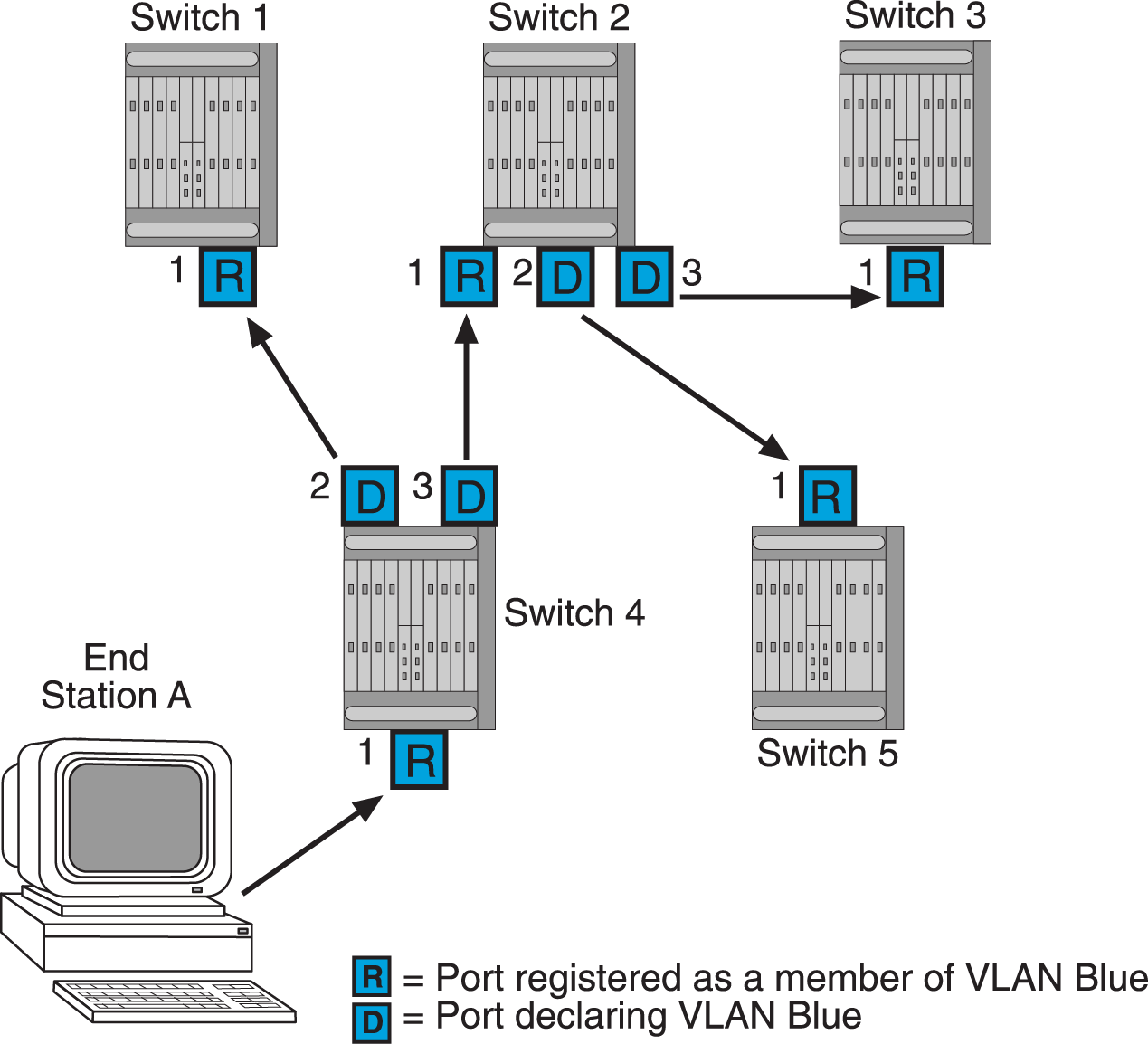When a VLAN has egress, the information is transmitted out ports on the device in a GVRP or MVRP formatted frame, using the GVRP or MVRP multicast MAC address. A switch that receives this frame examines the frame and extracts the VLAN IDs. The dynamic VLAN protocol then dynamically registers (creates) the VLANs and adds the receiving port to its tagged member list for the extracted VLAN IDs. The information is then transmitted out the other GVRP or MVRP configured ports of the device.
Example of VLAN Propagation Using GVRP or MVRP shows an example of how VLAN Blue from end station A would be propagated across a switch network. In this figure, port 1 of Switch 4 is registered as being a member of VLAN Blue and Switch 4 declares this fact out all its ports (2 and 3) to Switch 1 and Switch 2. These two switches register this in the port egress lists of the ports (Switch 1, port 1 and Switch 2, port 1) that received the frames with the information. Switch 2, which is connected to Switch 3 and Switch 5 declares the same information to those two switches and the port egress list of each port is updated with the new information, accordingly.


Note
If a port is set to “forbidden” for the egress list of a VLAN, then the VLAN‘s egress list will not be dynamically updated with that port.Administratively configuring a VLAN on an 802.1Q switch creates a static VLAN entry that will always remain registered and will not time out. However, GVRP or MVRP dynamically created entries will time out, and their registrations will be removed from the member list if the end station is removed. This ensures that, if switches are disconnected or if end stations are removed, the registered information remains accurate.
The end result of the dynamic VLAN configuration is that each port‘s egress list is updated with information about VLANs that reside on that port, even if the actual station on the VLAN is several hops away.

 Print
this page
Print
this page Email this topic
Email this topic Feedback
Feedback